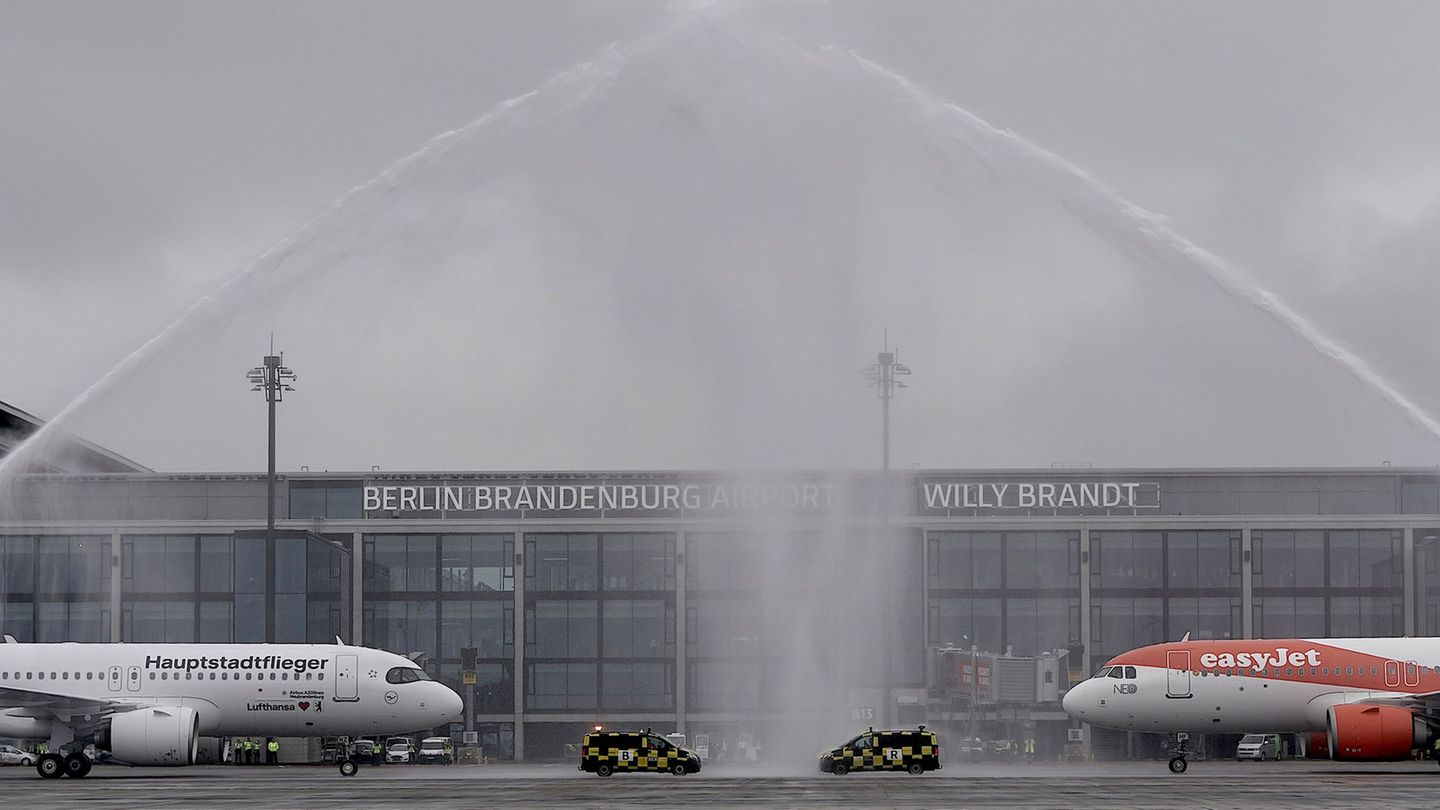Capital airport
Five years of BER – How are things going at the capital’s airport today?
Copy the current link
Add to watchlist
BER, once decried as a breakdown airport, is turning five years old – and is quietly celebrating. The first few years were turbulent. And even today the location continues to make headlines.
Nine years of construction delays, Corona crisis, climate protests, holiday chaos, hacker attack: Berlin Brandenburg Willy Brandt Capital Airport – BER for short – was only opened five years ago. But he can already look back on a turbulent history.
The BER opened on October 30, 2020 – nine years late due to serious construction and planning deficiencies. At 6.5 billion euros, the construction costs were three times as high as originally planned.
The airport company is now presenting the location as an innovation field for technical innovations: with bookable security slots and new scanners, passengers should be in the air as quickly as possible. But the economic situation remains tense and when it comes to passenger numbers, the airport is still a long way from the demand level of previous years. This is what it says about BER:
How is business going five years after opening?
Operations at BER were sometimes very jerky in the first few years after it went into operation. The airport reached its capacity limits, especially during the fall holidays of 2021. A lack of staff and space problems led to handling chaos. Travelers waited hours to check-in. Some missed their flights. At that time, the Corona restrictions made the clearance processes even more difficult.
The processes have now become established. Even at peak times around holidays, passengers rarely have to wait excessively long times at check-in or through security checkpoints. There have been repeated operational disruptions in recent years simply because of strikes. Recently, a hacker attack on an IT service provider caused chaos at check-in for days.
In order to speed up the processes, the Berlin-Brandenburg Airport Company (FBB) is relying on technical innovations: so-called CT scanners at the checkpoints ensure that passengers no longer have to unpack liquids and electronic devices. In the medium term, the scanners should ensure that passengers can take larger bottles or cosmetic tubes with them again. FBB also introduced time slots for security checks that can be booked free of charge. Passengers can therefore go through the controls at the booked time without having to wait long.
How many people travel via BER?
The airport opened in the middle of the pandemic, one of the biggest crises in aviation history. Due to travel restrictions, demand was almost zero. Since then, people have been traveling significantly more again. A few days ago, the operators welcomed the 100 millionth passenger at the airport. According to the FBB, around 19.4 million people flew over the location just outside Berlin between January and September of this year alone.
However, these numbers are a long way from pre-Corona levels. In 2019, the previous record year for air traffic in the capital region, there were around 36 million travelers at the then Schönefeld and Tegel locations. Airport boss Aletta von Massenbach and Berlin’s Economics Senator Franziska Giffey (SPD) are repeatedly calling for more long-haul connections at BER – in order to stimulate demand and make the capital region more attractive for international travelers.
How is the airport doing financially?
The airport company’s economic situation remains tense. The company made a net loss of more than 134 million euros last year. The FBB cannot yet finance itself and is dependent on the support of its owners – the federal government and the states of Berlin and Brandenburg.
A few years ago, the company worked out a partial debt relief plan with them totaling more than 2 billion euros. This included around 1.7 billion euros to compensate for Corona damage. A further 660 million euros are expected to flow in 2026. BER boss von Massenbach is confident that FBB will then be able to refinance itself with loans on the capital market.
What challenges will BER have to overcome in the future?
BER is one of the most important employers in the capital region. Around 20,000 people work there, 2,000 of them at the airport company FBB. In the coming years, the company’s main aim will be to further stimulate demand. Not an easy undertaking: Aletta von Massenbach repeatedly criticizes the high government taxes and fees for airports in Germany. These led to price-sensitive airlines such as Ryanair cutting connections at BER.
Another goal of the operators is climate-neutral operation by 2045. By 2030, CO2 emissions in FBB’s area of responsibility should be reduced by 65 percent compared to 2010. This involves, for example, the electrification of airport vehicles and the conversion of the energy supply to renewable sources.
dpa
Source: Stern




